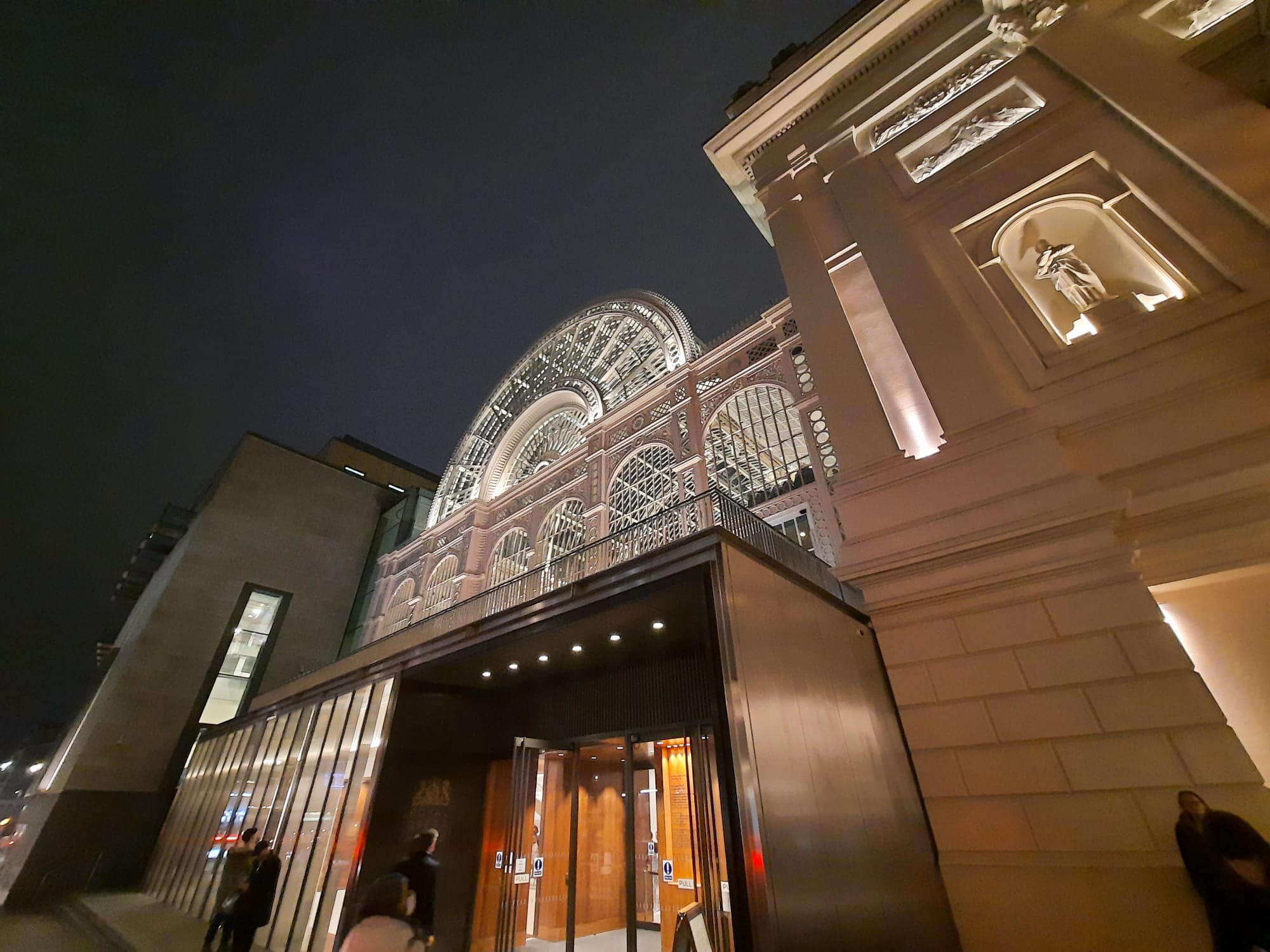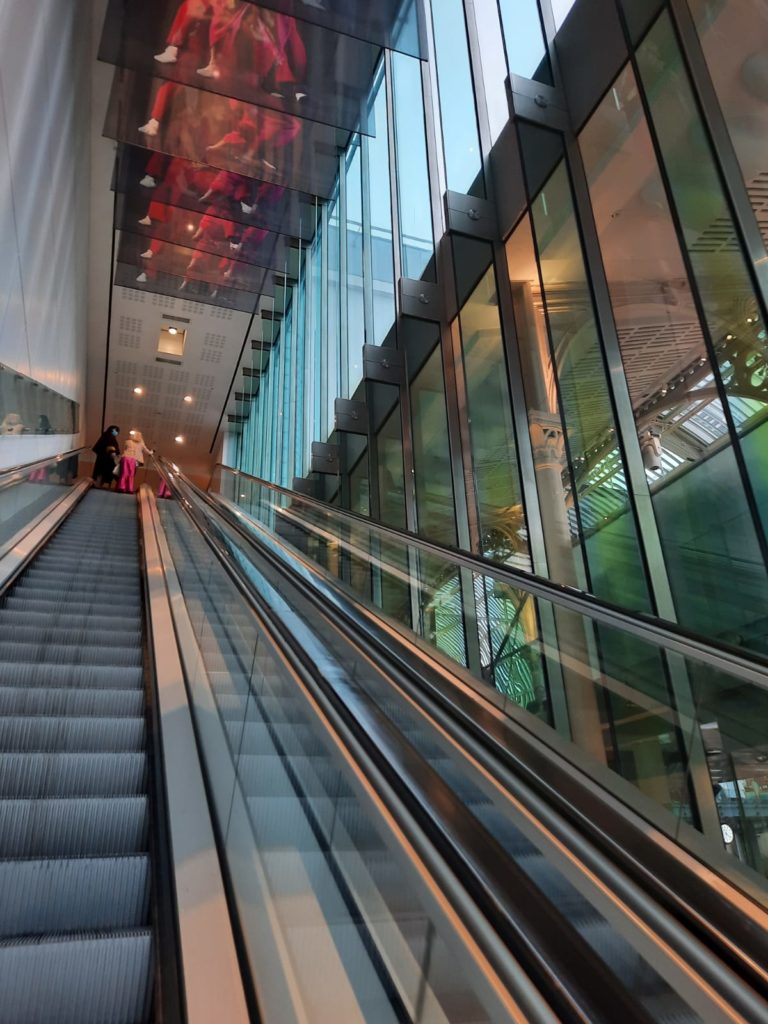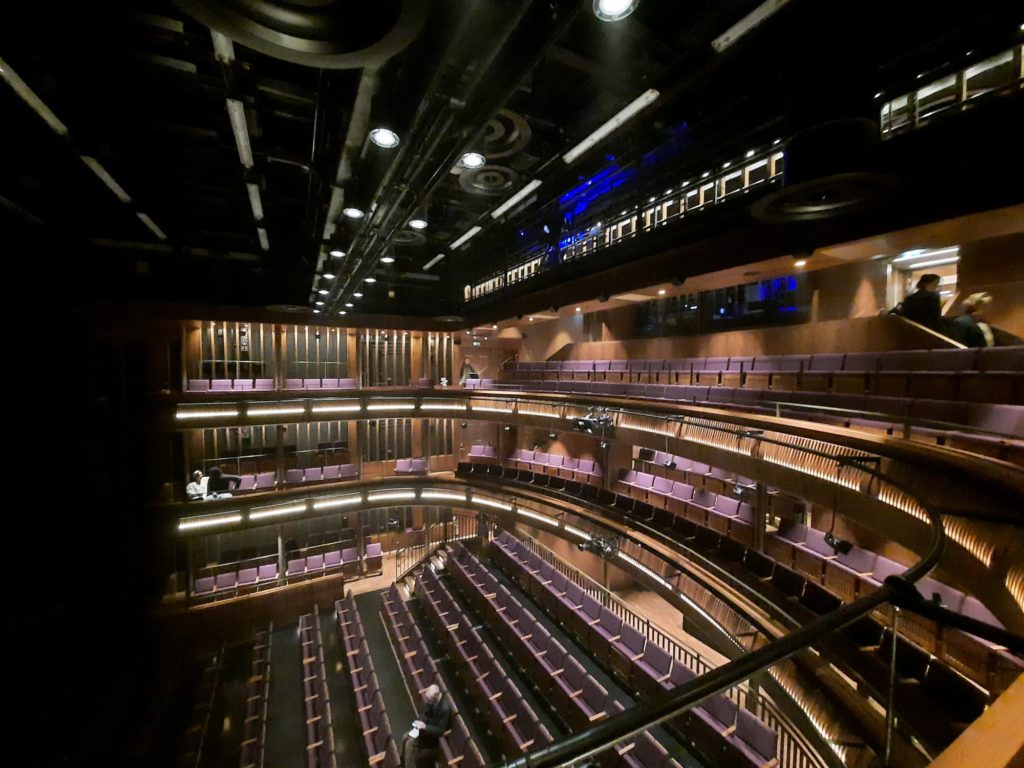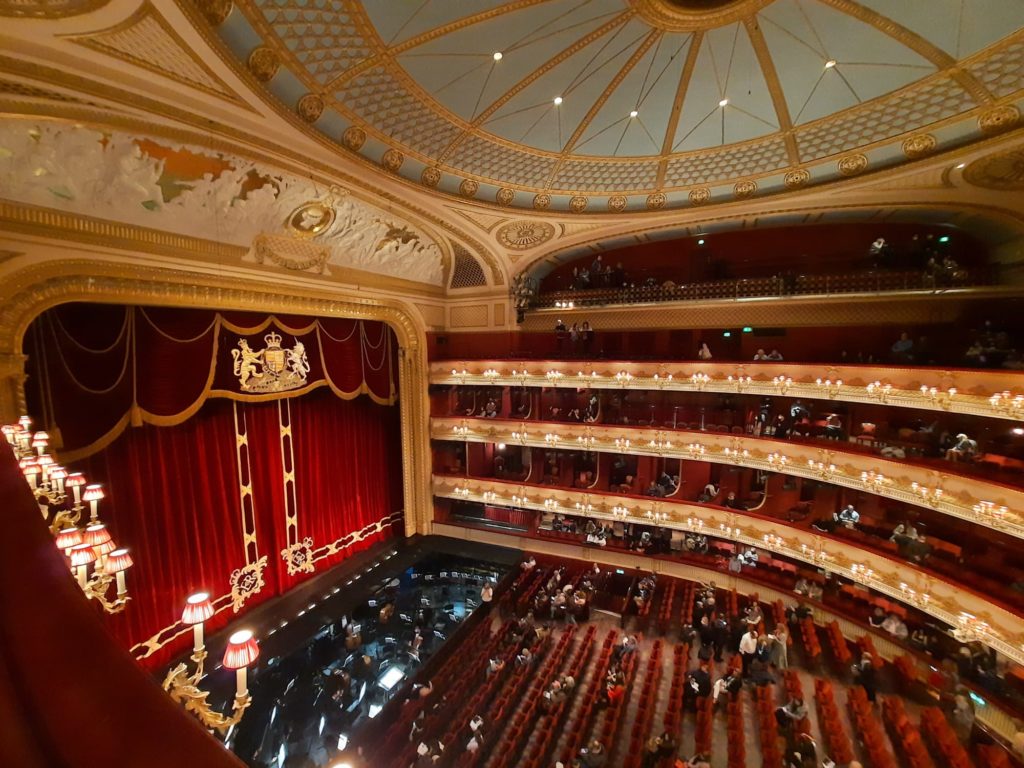Ballet Black Double Bill // Giselle – Royal Opera House, London
A review of two works at the Royal Opera House: a double bill by Ballet Black, and Giselle on the main stage. There’s something for everyone with such high quality choices on offer.
Two Very Different Ballet Works
The Royal Opera House has been a mainstay of my cultural life since things reopened in May (and between lockdowns before then). I’ve seen ballets like this one and this one, operas like this one and this one. And I even managed to get tickets for the Nutcracker last Christmas! What is nice now that there is a full season of programming back on is that there is a lot of variety in what can be seen on stage.
In true Salterton Arts Review form, I celebrated this plethora of choice by going to the Royal Opera House twice in a week. I first went to see Ballet Black in the Linbury Theatre, followed by Giselle on the Main Stage. Seeing two dance works in quick succession allowed me to compare and contrast different styles of production. One modern, challenging and poetic. And one traditional and heartfelt. It was my first time seeing Ballet Black perform at all, as well as my first time seeing Giselle. And I came away from both feeling energised, which after all is one thing I hope to get from my cultural endeavours.
So without further ado, let’s look at the two Royal Opera House productions I saw this week.
Ballet Black
It was nice to see something in the Royal Opera House‘s Linbury Theatre. The last time I was here it had been transformed into an entrance for Current, Rising, the “world’s first virtual reality opera” and a real spectacle. Now the Linbury is back to its primary function, staging great dance works which are perhaps more innovative or challenging than the Main Stage crowd-pleasers.
So this is where I came to see Ballet Black perform a double bill of short works. Ballet Black are a company founded by Cassa Pancho, for international dancers of Black and Asian descent. By celebrating diversity in their artists, they hope to encourage more diverse ballet audiences and engagement as well. This is the tail end of a tour, so if you don’t have tickets for the Royal Opera House today, you can catch them in Edinburgh later in November! I have been wanting to see Ballet Black for a while but this has been my first chance since the pandemic. I think this double bill was a perfect introduction as it shows the company’s range. Then or Now takes traditional ballet techniques to create something very fresh and modern; while The Waiting Game, choreographed by a member of the company, is very much more contemporary. Both are excellent.
I was impressed as well by the prowess of the dancers. Senior artist Cira Robinson stands out for the razor-sharp precision of her movements. Watching her dance with fellow Senior Artist José Alves is a dream, they are both at the top of their game. That is not to say that there are any weak links. You would never think that Ebony Thomas and Alexander Fadayiro were respectively a Junior and Apprentice Artist. And Isabela Coracy and Sayaka Ichikawa are wonderfully expressive. Rosanna Lindsey isn’t listed in the programme or on their website, but wherever they found her, they should keep her. And more on multi-talented Mthuthuzeli November later.
Then Or Now / The Waiting Game
Let’s look at these two works in more detail. As I mentioned above, Then or Now takes traditional ballet movements and turns them into modern choreography. The accompaniment is very interesting. The dancers move to Passacaglia for solo violin, a 1676 work by Heinrich Ignaz Franz von Biber, but also to poetry by Adrienne Rich. The von Biber work is arranged and recorded by Daniel Pioro, and Then and Now is choregraphed by Will Tuckett.
Both the music and the poetry introduce a rawness and a fragility. The dancers connect to the language and the sound of the strings. Rich’s poetry is a call to action, with themes of belonging and home. In different configurations, the dancers connect and interact with great intimacy. It’s really special to watch.
The Waiting Game is choreographed by Ballet Black Senior Artist Mthuthuzeli November. He draws on Beckett to create an absurdist/existentialist world. November dances the lead role, as a character battling uncertainty as he tries to understand the meaning of life. What I liked about The Waiting Game was its egalitarianism. There is little distinction between the male and female dancers in terms of costumes, and greater overlap in their movements than in Then or Now. We even at one point see the dancers lined up across the stage, en pointe more or less, the only difference being that the women are properly in pointe shoes. The Waiting Game is also a lot of fun, and shows the range of many of the dancers, particularly Sayaka Ichikawa.
I’m so pleased I finally saw Ballet Black! If you didn’t manage to catch this double bill, you can join me in keeping an eye on future works at the ROH or elsewhere.
Salterton Arts Review’s rating: 4/5
Then or Now / The Waiting Game on until 7 November 2021 as part of a tour
Giselle
As I mentioned earlier, this was my first time seeing Giselle. My ballet buddy and I actually had to look up the plot while eating dinner before the performance. I think we would have been ok though without that – compared to The Dante Project where I was struggling to figure out who was who and what they were up to, Giselle is a doddle. Not only is the plot pretty straightforward (peasants dancing in the first half, ghosts in the second), the characters gesture in clear signs to fill in the gaps. Very handy!
Giselle is a firm favourite in the classical ballet canon, first performed in 1841. It is the work of Adolphe Adam, who also wrote the pirate-y favourite Le Corsaire. To expand a little on my plot summary above, the story takes place in medieval Germany. Giselle is a beautiful peasant girl, who falls in love with prince-in-disguise Albrecht. He seemingly loves her too, but isn’t exactly honest with her, and also has a fiancée already. When Giselle discovers this, she almost immediately stabs herself with his sword and perishes dramatically. In between times, while the two are falling in love, there are a lot of peasant dances.
In the second act we meet the Wilis. These are the spirits of young women who died before their wedding day. When a man crosses their path, they force him to dance until he dies of exhaustion. They show us how it’s done on the bad guy of the piece (Hilarion, who revealed Albrecht’s deceit). But when they get hold of Albrecht, Giselle pleads for his life. By saving him, she also prevents herself from becoming one of them. The ballet ends with Giselle’s spirit set free and Albrecht wishing he had done things differently in the first act.
Traditional Ballet Done Well
This is absolutely a classic ballet in every sense. In comparison with the Ballet Black double bill which played with musical accompaniment, choreography and storytelling, Giselle sticks to tradition for all three. It does them very well though. The orchestra, conducted by Boris Gruzin, sounded wonderful to my untrained ears. The story, as I explained, is proper ballet territory – chaste romance, tragedy and big emotions. And the costumes (for which credit goes to John Macfarlane) are particularly wonderful. The peasants are peasant-y, the ghosts are ghost-like and ethereal. For me it was when the court of the Duke of Courland showed up that it got good. You can see some of them here: it’s proper sumptuous medieval glory like something out of Lucas Cranach.
The two other stellar components of this ballet for me were Lauren Cuthbertson in the lead role, and her pairing with Federico Bonelli as Albrecht. This role tends a bit towards the melodramatic, but Cuthbertson’s interpretation was tender and heartfelt. Again from my amateur viewpoint, she seemed absolutely technically brilliant as well. It made me wish I had shown any sort of talent in ballet class as a child: oh to be so effortlessly light and graceful… But anyway, I digress. As well as being wonderful herself, Cuthbertson’s pairing with Bonelli seemed genuine, to the point where I was rooting for Albrecht more than might be necessary.
If you are in the mood for a proper old-fashioned ballet, then Giselle may be for you. It’s got all the elements, and is a nice length as well at 2.5 hours. Performances are on for almost another month so get booking!
Salterton Arts Review’s rating: 4/5
Giselle on until 3 December 2021
If you see this after your page is loaded completely, leafletJS files are missing.




